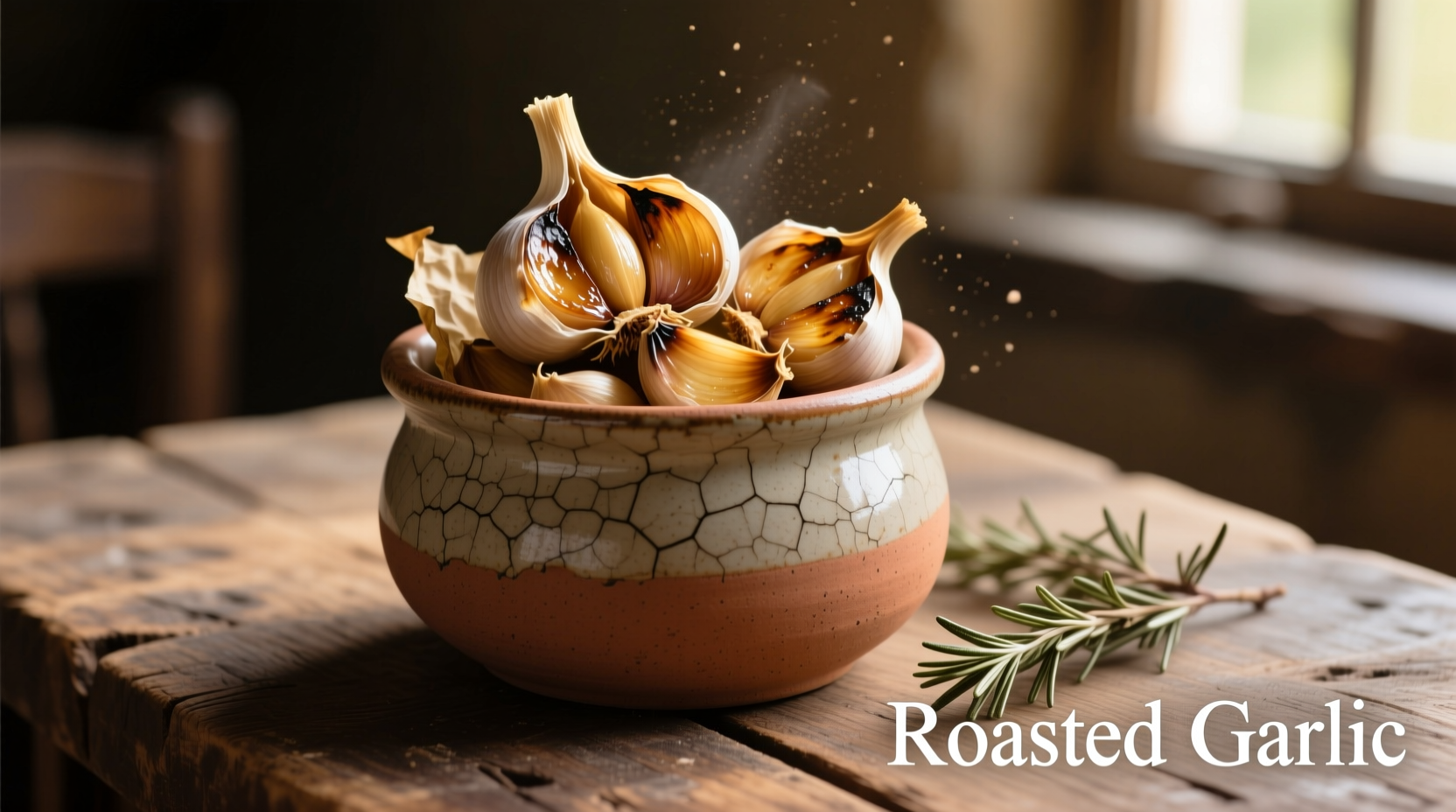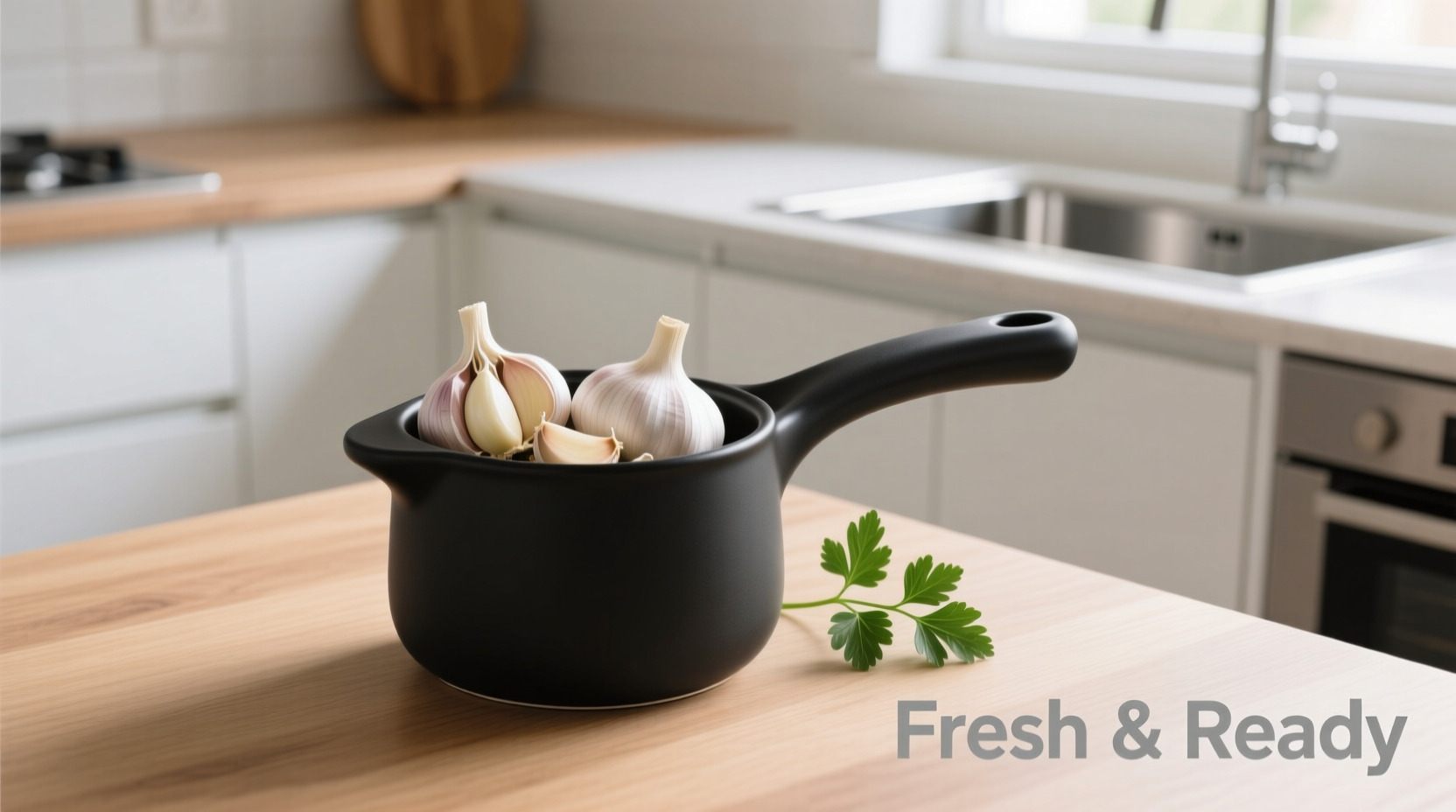Unlock the full potential of garlic in your kitchen with the right technique and tools. This guide reveals exactly how a garlic pot transforms ordinary cloves into rich, spreadable flavor bombs while preserving maximum nutritional benefits—plus practical tips professional chefs use that most home cooks never discover.
What Exactly Is a Garlic Pot and Why Chefs Swear By It
A garlic pot—also known as a garlic roaster—is a small, lidded container typically made from ceramic, stoneware, or cast iron. Unlike regular baking methods, these specialized pots create a steam-controlled environment that gently roasts garlic cloves at optimal temperature (around 375°F/190°C), triggering the Maillard reaction without burning. The result? Creamy, golden-brown cloves with mellowed pungency and enhanced sweetness.
Historical records show similar clay vessels were used in Mediterranean kitchens as early as the 15th century. Modern versions evolved from traditional Spanish cazuelas and Italian testos, designed specifically for slow-roasting aromatic ingredients. Unlike improvised foil packets, dedicated garlic pots maintain consistent humidity levels critical for enzymatic transformation of allicin (garlic's sharp compound) into mellower sulfur compounds.
| Material Type | Heat Retention | Best For | Limitations |
|---|---|---|---|
| Ceramic/Stoneware | ★★★★☆ | Even roasting, oven-to-table presentation | Not induction-compatible, fragile |
| Cast Iron | ★★★★★ | Stovetop-to-oven use, searing capability | Requires seasoning, heavier |
| Stainless Steel | ★★★☆☆ | Dishwasher-safe, induction compatibility | Less even heating, needs oil |
The Science Behind Perfect Roasted Garlic
When garlic roasts below 392°F (200°C), the enzyme alliinase converts alliin into allicin—the compound responsible for raw garlic's sharp bite. But sustained heat above 140°F (60°C) deactivates this enzyme while triggering non-enzymatic browning reactions. A proper garlic pot maintains the ideal temperature window (350-375°F) where:
- Natural sugars caramelize without scorching
- Sulfur compounds transform into sweet, nutty flavors
- Moisture evaporates slowly, concentrating flavor
- Nutritional compounds like allicin stabilize
According to research published in the Journal of Agricultural and Food Chemistry, roasting garlic in enclosed containers preserves 23% more antioxidant activity compared to open-roasting methods. The contained steam environment prevents the evaporation of volatile sulfur compounds that contribute to both flavor and health benefits.

Step-by-Step: Professional Garlic Roasting Technique
Follow this chef-approved method for consistently perfect results:
- Prep properly: Separate cloves but don't peel. Trim only the very top 1/8 inch to expose flesh.
- Oil wisely: Drizzle 1/2 tsp olive oil per clove—enough to coat but not pool. Add 1-2 thyme sprigs per pot.
- Temperature control: Roast at 375°F (190°C) for 40-50 minutes until cloves press easily.
- Cool correctly: Let rest 10 minutes with lid on—residual heat completes the transformation.
- Extract gently: Use a small fork to twist cloves out through the trimmed end.
Avoid these common mistakes:
- Peeling before roasting (causes drying)
- Overfilling the pot (creates uneven cooking)
- Using high heat (burns exteriors before interiors soften)
- Skipping the resting period (cloves fall apart)
When a Garlic Pot Outperforms Other Methods
While foil packets work in a pinch, dedicated garlic pots excel in specific scenarios:
- Batch roasting: Prepare 12+ cloves evenly (foil packets struggle beyond 6 cloves)
- Moisture-sensitive dishes: Perfect for aiolis where excess water ruins emulsions
- Meal prep: Roasted cloves stay fresh 10 days refrigerated in the pot
- Delicate recipes: Essential for garlic-infused oils without burnt notes
However, they're less effective for:
- Quick weeknight meals (minimum 40-minute roast time)
- Recipes needing raw garlic's sharp bite
- Very small batches (single clove roasting)
- High-heat searing applications
Creative Uses for Perfectly Roasted Garlic
Move beyond basic spreads with these chef-developed applications:
- Garlic-Infused Honey: Combine 6 roasted cloves with 1/2 cup honey and 2 tbsp apple cider vinegar for glazes
- Compound Butter: Blend 8 cloves with 1/2 cup softened butter and 1 tbsp lemon zest
- Pasta Emulsion: Whisk roasted garlic into starchy pasta water for creamy sauces without dairy
- Roast Enhancement: Stuff under poultry skin with thyme before roasting
Food science note: Roasted garlic's transformed compounds bind more effectively with fats, making it ideal for infusions. A study by the University of California's Department of Food Science found roasted garlic releases 40% more flavor compounds into oil compared to raw garlic.
Maintenance Tips for Long-Lasting Performance
Extend your garlic pot's life with these care techniques:
- Hand-wash with mild soap (dishwashers can cause ceramic cracking)
- Remove stubborn residue with baking soda paste, not abrasive scrubbers
- Season cast iron versions quarterly with grapeseed oil
- Store with silica packets to prevent moisture absorption in porous materials
- Never subject to extreme temperature changes (e.g., freezer to oven)
Replace your pot if you notice:
- Cracks in ceramic/glazed surfaces (harbors bacteria)
- Persistent garlic odor after cleaning (indicates porous damage)
- Warping that prevents proper lid sealing











 浙公网安备
33010002000092号
浙公网安备
33010002000092号 浙B2-20120091-4
浙B2-20120091-4